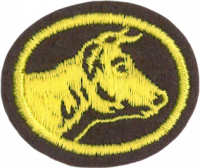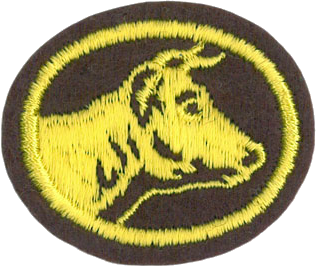Difference between revisions of "AY Honors/Dairying/Answer Key/es"
(Created page with "{{clear}}") |
(Updating to match new version of source page) |
||
| (18 intermediate revisions by 2 users not shown) | |||
| Line 1: | Line 1: | ||
| − | + | {{HonorSubpage}} | |
| − | |||
| − | {{ | ||
| − | |||
| − | |||
| − | |||
| − | |||
| − | |||
| − | |||
| − | |||
| − | }} | ||
| − | |||
| − | |||
<section begin="Body" /> | <section begin="Body" /> | ||
{{ansreq|page={{#titleparts:{{PAGENAME}}|2|1}}|num=1}} | {{ansreq|page={{#titleparts:{{PAGENAME}}|2|1}}|num=1}} | ||
| Line 30: | Line 18: | ||
<noinclude></noinclude> | <noinclude></noinclude> | ||
{{ansreq|page={{#titleparts:{{PAGENAME}}|2|1}}|num=3a}} | {{ansreq|page={{#titleparts:{{PAGENAME}}|2|1}}|num=3a}} | ||
| − | <noinclude></noinclude> | + | <noinclude> |
| + | </noinclude> | ||
{{clear}} | {{clear}} | ||
| Line 69: | Line 58: | ||
{{ansreq|page={{#titleparts:{{PAGENAME}}|2|1}}|num=4}} | {{ansreq|page={{#titleparts:{{PAGENAME}}|2|1}}|num=4}} | ||
<noinclude></noinclude> | <noinclude></noinclude> | ||
| − | <!-- 4. | + | <!-- 4. Conocer las técnicas de alimentación adecuada para una vaca en lactancia. --> |
| − | {{clear}} | + | {{clear}} |
{{clear}} | {{clear}} | ||
| Line 83: | Line 72: | ||
{{ansreq|page={{#titleparts:{{PAGENAME}}|2|1}}|num=5}} | {{ansreq|page={{#titleparts:{{PAGENAME}}|2|1}}|num=5}} | ||
<noinclude></noinclude> | <noinclude></noinclude> | ||
| − | <!-- 5. | + | <!-- 5. Saber cómo se produce la leche en la vaca. --> |
| − | {{clear}} | + | {{clear}} |
| − | {{clear}} | + | {{clear}} |
| − | {{clear}} | + | {{clear}} |
{{clear}} | {{clear}} | ||
| Line 101: | Line 90: | ||
{{ansreq|page={{#titleparts:{{PAGENAME}}|2|1}}|num=6}} | {{ansreq|page={{#titleparts:{{PAGENAME}}|2|1}}|num=6}} | ||
<noinclude></noinclude> | <noinclude></noinclude> | ||
| − | <!-- 6. | + | <!-- 6. Conocer los pasos a ordeñar una vaca, ya sea a mano o a máquina. --> |
| − | === | + | ===Ordeñar a mano=== |
| − | {{: | + | {{:AY Honors/Milk a cow/es}} |
| − | |||
| − | |||
| − | |||
| − | {{clear}} | + | {{clear}} |
| − | {{clear}} | + | {{clear}} |
{{clear}} | {{clear}} | ||
| − | {{clear}} | + | {{clear}} |
{{clear}} | {{clear}} | ||
| Line 124: | Line 110: | ||
{{ansreq|page={{#titleparts:{{PAGENAME}}|2|1}}|num=7}} | {{ansreq|page={{#titleparts:{{PAGENAME}}|2|1}}|num=7}} | ||
<noinclude></noinclude> | <noinclude></noinclude> | ||
| − | <!-- 7. | + | <!-- 7. Conocer ocho partes de una máquina para ordeñar. --> |
| − | |||
| − | |||
| − | |||
| − | |||
| − | |||
| − | |||
| − | |||
| − | |||
| − | |||
<noinclude></noinclude> | <noinclude></noinclude> | ||
| Line 139: | Line 116: | ||
{{ansreq|page={{#titleparts:{{PAGENAME}}|2|1}}|num=8}} | {{ansreq|page={{#titleparts:{{PAGENAME}}|2|1}}|num=8}} | ||
<noinclude></noinclude> | <noinclude></noinclude> | ||
| − | <!-- 8. | + | <!-- 8. ¿Qué es la mastitis? ¿Qué medidas pueden adoptarse para prevenir la mastitis? --> |
| − | |||
<noinclude></noinclude> | <noinclude></noinclude> | ||
| Line 146: | Line 122: | ||
{{ansreq|page={{#titleparts:{{PAGENAME}}|2|1}}|num=9}} | {{ansreq|page={{#titleparts:{{PAGENAME}}|2|1}}|num=9}} | ||
<noinclude></noinclude> | <noinclude></noinclude> | ||
| − | <!-- 9. | + | <!-- 9. Conocer cinco problemas de salud del rebaño, sus síntomas y cómo prevenir y/o tratarlos. --> |
| − | |||
| − | |||
| − | {{clear}} | + | {{clear}} |
{{clear}} | {{clear}} | ||
| Line 170: | Line 144: | ||
{{ansreq|page={{#titleparts:{{PAGENAME}}|2|1}}|num=10}} | {{ansreq|page={{#titleparts:{{PAGENAME}}|2|1}}|num=10}} | ||
<noinclude></noinclude> | <noinclude></noinclude> | ||
| − | <!-- 10. | + | <!-- 10. Conocer el significado de los siguientes términos: --> |
<noinclude></noinclude> | <noinclude></noinclude> | ||
{{ansreq|page={{#titleparts:{{PAGENAME}}|2|1}}|num=10a}} | {{ansreq|page={{#titleparts:{{PAGENAME}}|2|1}}|num=10a}} | ||
| Line 198: | Line 172: | ||
{{ansreq|page={{#titleparts:{{PAGENAME}}|2|1}}|num=11}} | {{ansreq|page={{#titleparts:{{PAGENAME}}|2|1}}|num=11}} | ||
<noinclude></noinclude> | <noinclude></noinclude> | ||
| − | <!-- 11. | + | <!-- 11. Explicar la pasteurización de la leche y el cuidado adecuado de los utensilios lácteos y los aparatos. --> |
{{clear}} | {{clear}} | ||
| Line 206: | Line 180: | ||
{{clear}} | {{clear}} | ||
| − | {{clear}} | + | {{clear}} |
| − | {{clear}} | + | {{clear}} |
{{clear}} | {{clear}} | ||
| Line 220: | Line 194: | ||
{{clear}} | {{clear}} | ||
| − | {{clear}} | + | {{clear}} |
{{clear}} | {{clear}} | ||
| Line 228: | Line 202: | ||
{{clear}} | {{clear}} | ||
| − | + | {{clear}} | |
| − | + | {{clear}} | |
| − | + | {{clear}} | |
<noinclude></noinclude> | <noinclude></noinclude> | ||
| Line 238: | Line 212: | ||
{{ansreq|page={{#titleparts:{{PAGENAME}}|2|1}}|num=12}} | {{ansreq|page={{#titleparts:{{PAGENAME}}|2|1}}|num=12}} | ||
<noinclude></noinclude> | <noinclude></noinclude> | ||
| − | <!-- 12. | + | <!-- 12. Ayudar con el cuidado y el ordeñado de una manada lechera durante al menos tres meses. --> |
| − | + | {{clear}} | |
<noinclude></noinclude> | <noinclude></noinclude> | ||
{{CloseReq}} <!-- 12 --> | {{CloseReq}} <!-- 12 --> | ||
<noinclude></noinclude> | <noinclude></noinclude> | ||
| − | == | + | ==Referencias== |
| − | |||
| − | |||
| − | |||
| − | |||
| − | |||
<noinclude></noinclude> | <noinclude></noinclude> | ||
| − | + | {{CloseHonorPage}} | |
| − | |||
Latest revision as of 16:20, 14 July 2022
1
2
3
3a
3b
3c
3d
3e
4
5
6
Ordeñar a mano
Históricamente, el ordeño y el procesamiento tuvieron lugar juntos en el espacio y el tiempo: en una granja lechera. La gente ordeñaba los animales a mano; en las granjas donde solamente se mantienen cantidades pequeñas, se puede practicar el ordeño manual. El ordeño manual se logra agarrando las tetinas (a menudo pronunciadas 'tetas') en la mano y extrayendo leche apretando los dedos, progresivamente, desde el extremo de la ubre hasta la punta o apretando la tetina entre el pulgar y el dedo índice y luego moviendo la mano hacia abajo desde la ubre hacia el final de la tetina. Esto se repite, usando ambas manos para la velocidad. Ambos métodos dan como resultado que la leche que quedó atrapada en el conducto de leche se vierta por el extremo en un balde que se apoya entre las rodillas (o descansa en el suelo) del ordeñador, que generalmente se sienta en un taburete bajo.Tradicionalmente, la vaca, o las vacas, se paraban en el campo o en el prado mientras se las ordeñaba. Las vacas jóvenes, las vaquillas, tendrían que ser entrenadas para permanecerse quietas para ser ordeñadas. En muchos países, las vacas fueron atadas a un puesto y ordeñadas. El problema con este método es que se basa en bestias tranquilas y manejables, porque el extremo posterior de la vaca no está restringido. En países fríos donde las vacas se mantienen en establos, por lo menos durante el invierno, si no durante todo el año, todavía están atadas sólo por el cuello o la cabeza, particularmente donde se mantienen en pequeñas cantidades.
7
8
9
10
10a
10b
10c
10d
10e
10f
10g
11
12



